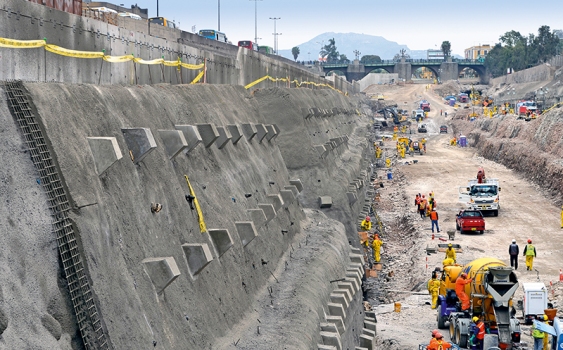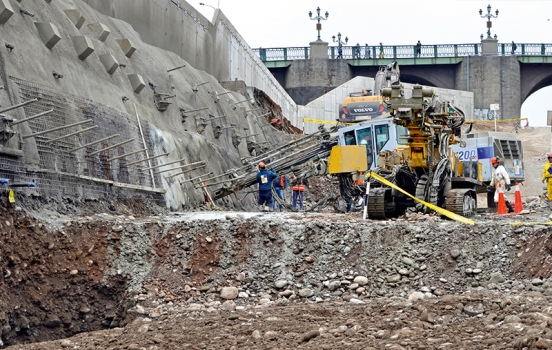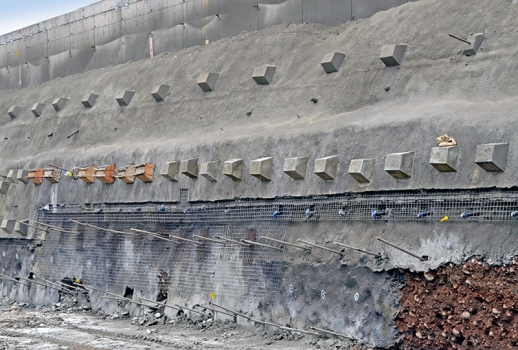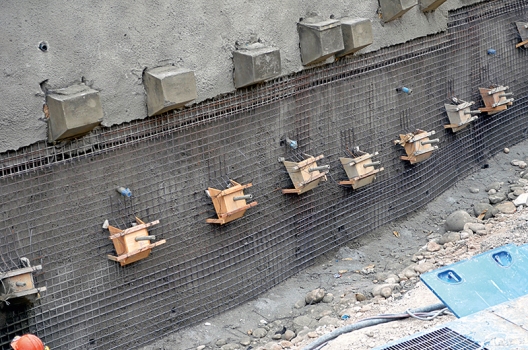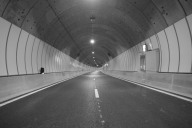Vía Parque Rímac – Spectacular tunnelling project in Lima
The Vía Parque Rímac Project is an important infrastructure project that is under construction in Lima, the capital of Peru. A 7 km long section of the 16 km long road is being completely rebuilt; 9 km of new roads are part of the project, and the work also includes the construction of 11 new viaducts.
Media
The construction of a 2 km long tunnel under the Rímac River is the most important and technically challenging part of this project. Once completed, the six-lane tunnel will decrease traffic congestion in this area by up to 80%. Initially, the river had to be deviated into a newly constructed canal that is separated by a wall from the tunnel excavation. To build the tunnel, the exterior walls of the excavation were then stabilized along a length of 200 m using high-strength soil nails.
DSI Peru supplied Type R51 Self-Drilling DYWI® Drill Anchors in lengths of 9 to 15 m. The hollow bar anchors were produced in lengths of 2, 3 and 4 m and installed in varying lengths using force-fit couplers. Due to the soil strata that mainly consisted of gravel and boulders, the anchors were fitted with carbide button bits. The DYWI® Drill Anchors were installed using a hammer head and injected with cement mortar that simultaneously served as drilling fluid.
62,000 m of drill anchors
In the next phase, tunnel excavation was carried out up to a depth of 15 m. During this process, the walls of the excavation and the tunnel walls that were being excavated were also stabilized using Type R51 DYWI® Drill Anchors. On the whole, DSI Peru supplied 62,000 m of DYWI® Drill Anchors for this project and carried out the soil nail tests. The DYWI® Drill Hollow Bar Anchors for this important project were produced in DSI Austria's plant in Pasching near Linz and shipped to Lima in time and on schedule.
Subsequently, the tunnel walls were stabilized using reinforced concrete in order to provide a maximum of stability and earthquake resistance. After completion of the excavation work, the tunnel, which consists of precast elements, will be built. The tunnel roof will subsequently be covered with a watertight coating and backfilled with soil. Afterwards, the river will be redirected over the tunnel, and the construction of the second tunnel will be carried out following the same procedure.
References
Structure Types
- About this
data sheet - Product-ID
7347 - Published on:
09/05/2016 - Last updated on:
17/11/2021

